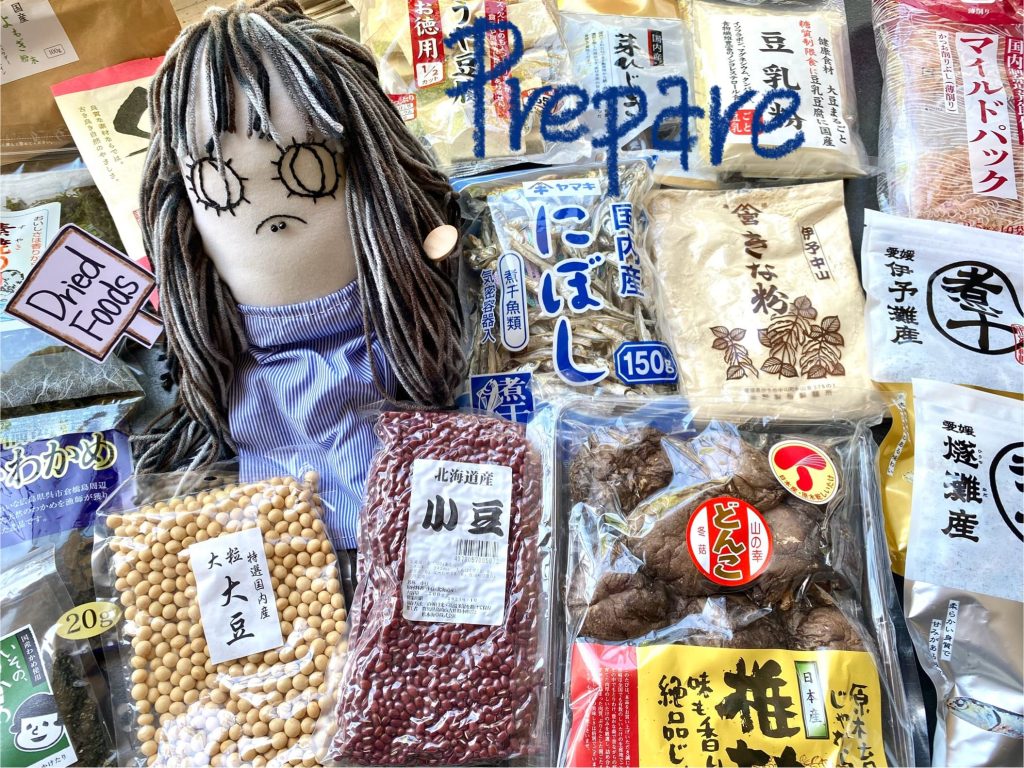
Which dried foods are good for our long-term stockpile?
I know about dried beans. Are there other dried foods?
Dried food needs a lot of water, right? I don’t want to waste my water in an emergency.
I imagine that dried food tastes bad… Can I really eat it?
First of all, if I’m being totally upfront, dried foods can end up costing a lot of money.
If you start buying dried foods without a plan, there’s no end in sight. There are so many different kinds of dried food that you can find at stores. Remember, we have limited space and must prioritize.
We need “rich foods” and “high-calorie foods” to survive a long-term emergency.
This is the most important thing when setting up your long-term stockpile.
Please do not forget this.
A long time ago, people used to eat a lot of dried food because they didn’t have refrigerators. Dehydration is one of the oldest and most widespread food preservation techniques, and dried foods have become sophisticated over time. Back then, for many people, dehydration at home was a convenient way to preserve food.
How about now?
I think most people haven’t had the opportunity to learn how to dehydrate food the old-fashioned way, but fortunately, we have modern freeze-drying techniques, including freeze-dryers that you can buy for your home.
⚠️
Remember, we have limited space and must prioritize. We need “rich foods” and “high-calorie foods” to survive a long-term emergency. This is the most important thing when setting up your long-term stockpile.
What’s the difference between “Dehydrated food” and “Freeze dried food”?
Dehydrated food:
can lose quite a bit of moisture – up to 90 percent. However, do‐it‐yourself home dehydrators may only remove 80% of the water from food, leaving it with a shorter shelf life. Most high-quality, dehydrated food will keep up to 15 years, and depending on the type of food, may in some cases last up to 25 years. Dehydrated food typically retains only 60-75% of the original nutrients.
Freeze‐dried food :
98‐99 percent of the moisture is removed from food during the freeze‐dry process. Well suited for long-term storage, it usually has a shelf life of 25 years or more. Freeze-dried foods maintain most of their nutrients during the process, and once rehydrated, are very similar in nutritional value to their fresh counterparts. 97% of the nutrients are retained.
Removing the water content, both products end up with concentrated nutritional value. As a lightweight, nutrient-dense option, dried foods are great for saving space. They have a longer shelf life than fresh foods and therefore can help reduce waste.
Personally, I do not plan to buy or use a freeze dryer, because it requires electricity; I just can’t get the idea of a long-term power outage out of my head. I prefer to learn preservation techniques that don’t require electricity, and I plan to buy a minimum of freeze-dried foods. This time, I got dried foods from the grocery store, but in the near future I plan to try making dried foods, by myself.
Before building a massive stockpile of dried food, I recommend you try eating smaller samples first, and get used to cooking them. You will be able to find the ones that taste the best to you and the ones that are the easiest to prepare. I picked up dried food which has good nutritional value and which my family is already used to eating. Some of these dried foods are from Japan, but you can get them over the internet.
My recommendations
1. Dry beans (soy beans and azuki beans)
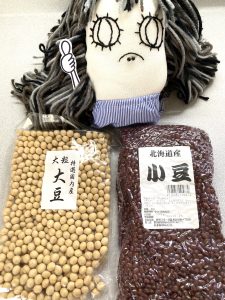
As time goes by, dry beans get hard. That’s why many people tend to pick up canned beans. One method, when you boil dry beans, is to add baking soda to make them soft. Personally, I don’t keep a lot of soy beans. But I did buy soy bean powder, because it doesn’t need water. I have never tried planting dried beans, to see if they grow… but in a long-term emergency, the ability to grow fresh food might help us survive. We should have some soy beans, at least a small stash.
Azuki beans are used for Japanese sweets. “Sweet beans.” Soak them in the water overnight, and then boil them. When they become soft, add sugar, and mix them until they are a smooth, thick texture. I think most Japanese people know that azuki beans are a good cure for exhaustion.
2. Dry shiitake mushrooms
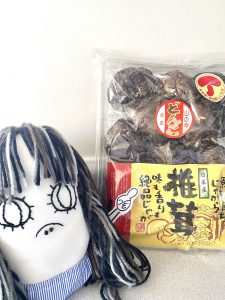
Dry shiitake mushrooms have more vitamin D than raw ones. You just soak them in water until soft, and then put them into your soup (my easy way). You can also make a soup stock by soaking them in water. Or you can simply add dry shiitake directly into your favorite soup, and then simmer everything together.
3. Niboshi (dried sardines)
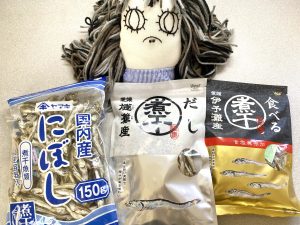
Niboshi are baby sardines and dried anchovies. Japanese people use them to make stock, or they simply eat them whole as a calcium-rich snack.
4. Katsuobushi (dry bonito shavings)
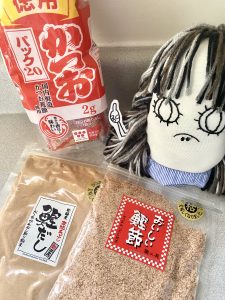
Katsuobushi, or dried bonito flakes, is simply dried shavings of bonito or skipjack tuna. It is used in making dashi broth and also used as a topping, garnish, or seasoning on top of pretty much anything (salads, rice, noodles, etc.). Katsuobushi contains all the amino acids essential to human health, plus other beneficial proteins and minerals.
5. Dry seaweed ( nori, wakame and hijiki)
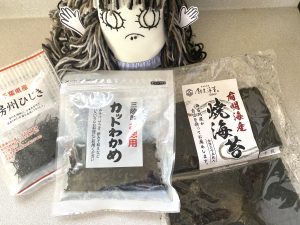
Seaweed contains rich minerals and fiber. There are many kinds of seaweed, but I picked up 3 types for my long-term stockpile. They are very easy to use in an emergency. When you make a soup, just add your seaweed. Or else you can cook rice with dry seaweed mixed in. The most common type of seaweed, nori, can be used to wrap rice balls or can be eaten directly, as a snack.
6.Dry vegetables (kale powder, tomato powder, yomogi powder, soybean powder)
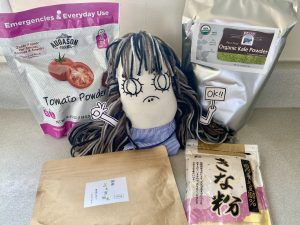
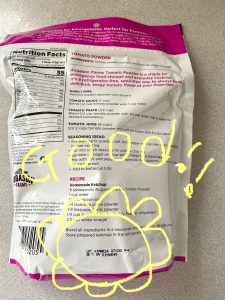
If you ask me, I would advise you to pick up freeze-died, powdered vegetables. Powdered veggies keep longer and are a lot less cumbersome. Also, powdered style vegetables will not taste “old” because there’s nothing to bite into. In my long-term stockpile, I store kale and tomato powder to use as a pasta sauce, instead of keeping canned sauce or canned vegetables. Powdered-style is a good way to go. I use kale powder when I make suiton (#24), and all I do is mix the kale powder in with the dough. As you know, kale is very nutritious. If you are a good cook, you might come up with creative recipes using powdered ingredients.
Yomogi is Japanese mugwort (artemisia princeps). Yomogi has traditionally been eaten as a food and also used as an herbal medicine to treat a variety of health conditions.
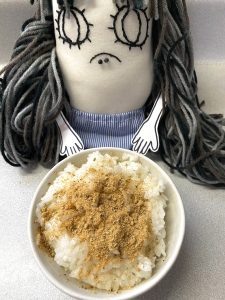
When I cook rice, I put soybean powder and sugar on top as Furikake.
Things to Remember
▪︎Please do not forget that before eating long-term stockpile foods, absolutely check the food’s appearance and smell. Trust your five senses. Eat them at your own risk.
▪︎Put in mylar bags with oxygen absorbers.
I don’t like buying a lot of supplements. I want my kids to get their nutrition from real food, as much as possible.
Of course, it is better to get nutrition from fresh food, but that may be difficult in a long-term emergency.
As such, dried food will help us stay healthy, without needing to take a bunch of supplemental pills.
Even thought preservation technology is improving more and more, dehydrated vegetables can’t compete with fresh vegetables. When we’re in the midst of a real emergency, and we realize that the crisis will be long-term, we start thinking about growing our own vegetables. No matter how much, or how little, experience you have, you can absolutely try to make yourself a home vegetable garden.
Maybe you should add vegetable seeds to your emergency stockpile shopping list.
I did. I will explain in a future post.
See you next time.
Remember, “Protect your life by yourself” (自分の命は自分で守る). You need to survive first, and then you need your emergency supply. No matter how well you prepared your emergency supplies, if you die, then all of your preparations will have been for nothing. First and foremost, keep your health up all the time. Build your stamina so that if you need to, you can evacuate as quickly as possible. Stay healthy.
Pingback: Emergency Stockpile Food 6: Canned Foods #27 – Goriyama